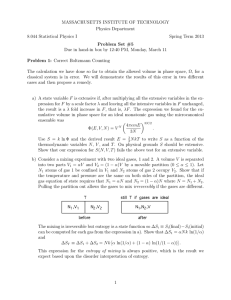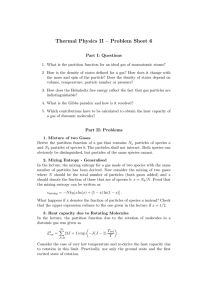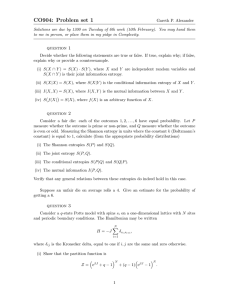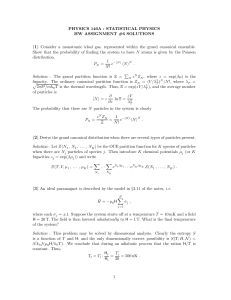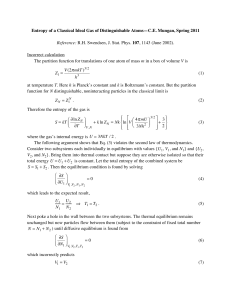Thermal Physics II – Solutions for Problem Sheet 6
advertisement
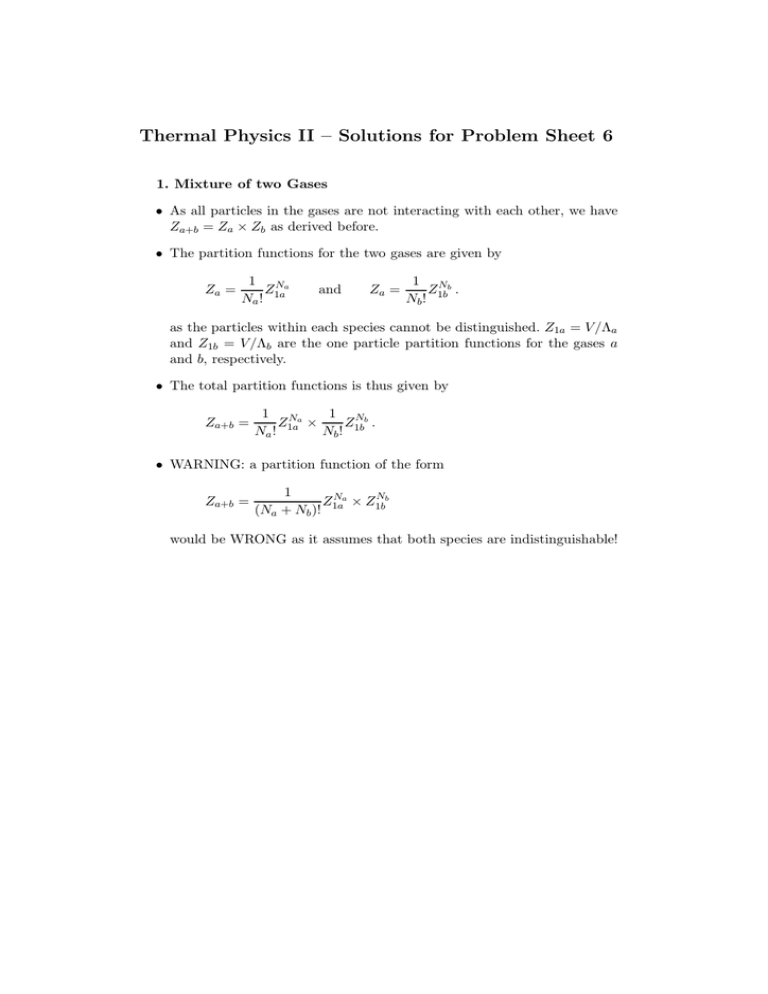
Thermal Physics II – Solutions for Problem Sheet 6 1. Mixture of two Gases • As all particles in the gases are not interacting with each other, we have Za+b = Za × Zb as derived before. • The partition functions for the two gases are given by Za = 1 Na Z Na ! 1a and Za = 1 Nb Z . Nb ! 1b as the particles within each species cannot be distinguished. Z1a = V /Λa and Z1b = V /Λb are the one particle partition functions for the gases a and b, respectively. • The total partition functions is thus given by Za+b = 1 Nb 1 Na Z1a × Z . Na ! Nb ! 1b • WARNING: a partition function of the form Za+b = 1 Nb Z Na × Z1b (Na + Nb )! 1a would be WRONG as it assumes that both species are indistinguishable! 2. Mixing Entropy - Generalised • If x = Nb /N the we also have Na /N = 1 − x as N = Na + Nb . • If two gases mix, they now both occupy the volume V . Before mixing they occupied the volumes Va and Vb respectively. These volumes must have the similar relation as the particle numbers to have the same pressures: Vb /V = x and Va /V = 1 − x as V = Va + Vb . • The entropy change for gas a is related to its volume change as before ∆Sa = Na kB ln V Va 1 1−x = −(1 − x)N kB ln (1 − x) . = (1 − x)N kB ln • Similar we find for the entropy change for the particles b ∆Sb = Nb kB ln V Vb 1 x = −xN kB ln x . = xN kB ln • Adding both contribution, we find for the total mixing entropy h i ∆S = ∆Sa + ∆Sb = −N kB (1 − x) ln(1 − x) + x ln(x) . • If one uses the same number of particles a and b (same volumes as well, of course), then x = 12 . In this case, we find ∆S = ∆Sa + ∆Sb = N kB ln 2 as we have x = 1 − x and a negative sign from the logarithm law. 3. Heat capacity due to Rotating Molecules • If we only consider the two lowest stares, the partition function becomes 1 Zrot Trot = 1 + 3 exp −2 T . • Taking the logarithm and considering that the second term is small, we get ln Z = ln 1 + 3 exp −2 Trot T ≈ 3 exp −2 Trot T . • In the next step, we calculate the internal energy U = N kB T 2 ∂ ln Z ∂T Trot = 6N kB Trot exp −2 T . • The heat capacity follows as the temperature derivative cV = ∂U ∂T V = 3N kB 2Trot T 2 exp −2 Trot T The main functional form is given here by the exponential. Thus, the heat capacity approaches zero for T → 0.
